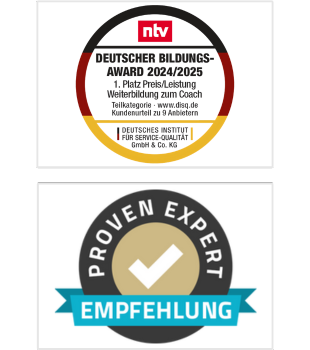What Leaders Can Learn From Coaches
Abschlussarbeit von Nora Weisel, read more
Leadership in today’s world
The key to successful leadership today is influence, not authority.
Kenneth Blanchard
In a world of increasing complexity and information, leadership is more important than ever.
Today, leaders in all areas of society find themselves in a constantly and rapidly changing environment. They steer complex, often globalized (sub-)organizations in times of high volatility and radical political, economic, social and technological shifts.
They make farreaching strategic decisions in times of great uncertainty and ambiguity. They cope with handling high levels of pressure to perform while at the same time creating the organizational culture that enables prosperity.
In this environment, leadership, as “the art of motivating a group of people to act toward achieving a common goal”1 constitutes an extremely challenging task – and a tremendously important foundation for meaningful impact for our societies.
Collective achievement, change and progress require collective movement. It requires aligning the unique capabilities of individuals towards a higher, common objective.
That is, it requires leaders that provide purpose, guidance and motivation to activate the full collective potential that lies within the individuals of an organization:
If you’re a manager, your most important job is to help those around you reach their greatest potential
(Boyatzis et al, 2019)
In recent years, multiple authors have stressed that in a world of high volatility, uncertainty, complexity and ambiguity (VUCA) the traditional, directive leadership style is not accurate and effective anymore (Lawrence, 2013).
Two examples of alternative leadership concepts are Edgar Schein’s “Humble Leadership” and Robert Greenleaf’s “Servant Leadership”.
In his same-named book, Schein (2016), one of the key pioneers in the field of organizational culture and leadership and his son Peter Schein, call for a shift from static hierarchies and professional distance (leaders as “heroic superstars”) towards relationships, openness and trust (leaders as empathic, collaborative partners).
Greenleaf’s (1982) “Servant Leadership” goes even further and defines a leader as fully dedicated to identifying and serving his employees’ needs. Like in Schein’s framework, Greenleaf stresses the importance of suitable new competence profiles – emphasizing listening, empathy, healing, awareness, persuasion, conceptualization, foresight, stewardship, commitment to the growth of people, and building community as key capabilities of modern leaders (Spears, 1998).
Leadership is lifting a person’s vision to high sights, the raising of a person’s performance to a higher standard, the building of a personality beyond its normal limitations.
Peter Drucker
What these and other modern leadership concepts have in common is the idea of an empowerment mindset that supersedes a governing mindset.
The traditional, authoritative and transactional leadership style (teaching others what to do) might apply for situations in which the leader has the right answer – and hence all information, knowledge and experience needed to make a thorough decision.
But the greater the situational complexity, the more the leader depends on the expertise, talent and judgment of its employees or colleagues.
They need to “supplement their industry and functional expertise with a general capacity for learning – and they must develop that capacity in the people they supervise” (Ibarra & Scoular, 2019).
With each individual being the knowledge carrier, solution contributor and decision-maker, the ultimate task of the leader becomes to engage and enable others to unleash their full potential and to facilitate positive change. The role of the leader shifts from providing answers to providing support and encouragement.
The leader adopts the mindset of a coach.
In their article “The Leader as Coach”, Herminia Ibarra and Anne Scoular (2019), two highly recognized researchers in the field of Executive Coaching, outline this phenomenon of leaders as coaches as effective framework in an increasingly disruptive business world:
“To cope with this new reality, companies are moving away from traditional command-and-control practices and toward something very different: a model in which managers give support and guidance rather than instructions, and employees learn how to adapt to constantly changing environments in ways that unleash fresh energy, innovation, and commitment. The role of the manager, in short, is becoming that of a coach.”
Key characteristics of a coach’s role and stance
In order to understand what leaders might be able to learn and adapt from coaches, we first need to shed light on the unique characteristics and qualities of a coach. What actually is the role of a coach? According to Frederic Hudson (1999), a pioneer in the field of Executive Coaching,
the ultimate function of coaches […] is to help persons and organizations find their purpose, vision, and plans for the immediate future
Boyatzis et al. (2019) define the role of a coach as helping others in their intentional change process, to achieve their aspirations or change the way they think, feel and act. They describe four major process steps or “discoveries” the coachee performs with the support of the coach:
The discovery of the (1) Ideal Self (Who do I want to be?),
the (2) Real Self (Who am I?) including strengths and gaps (Ideal vs. Real Self),
the (3) Learning Agenda (How can I build on my strengths while reducing the gaps?)
as well as (4) Experimenting and Practicing new behavior, thoughts and feelings.
They conclude: “So a big part of a coach’s job is to keep people progressing in the right direction experimenting with new behaviors, testing different tactics, and then practicing and perfecting those that prove most effective.”
What these definitions and many others have in common is the focus on the process, not the outcome: the key responsibility of the coach is to constantly shape, control and adjust the coachee’s process towards a solution or answer, whereas the coachee is ultimately responsible for the outcome.
The coach enables the discovery of new options, paths, and directions, but it is the coachee who ultimately defines where to go.
Marshall Goldsmith, one of the most recognized executive coaches, emphasizes this idea by characterizing coaching as a “how to get there” process, rather than a “where to go” process.
With this in mind, we can take a closer look at the core beliefs that determine a coaching mindset.
Sources
1 https://www.thebalancesmb.com/leadership-definition-2948275










